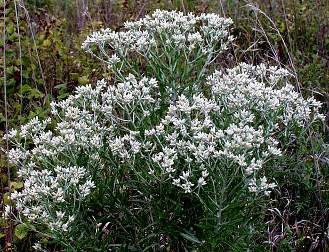Types of Oak Trees in NC: A Comprehensive Guide
North Carolina is home to a diverse range of oak trees, each with its unique characteristics and benefits. Oak trees are a staple in North Carolina’s forests, and they play a crucial role in the state’s ecosystem. There are over 20 different species of oak trees in North Carolina, and each has its distinct features, such as leaf shape, bark texture, and acorn size.

One of the most common oak trees found in North Carolina is the white oak. White oaks can grow up to 100 feet tall and have a broad, rounded crown. They are known for their strong wood, which is used for furniture, flooring, and barrels. The white oak’s leaves are lobed and have a rounded shape, and they produce acorns that are a valuable food source for wildlife. Another prevalent oak tree in North Carolina is the red oak, which can grow up to 80 feet tall and has a narrow, conical crown. Red oaks have deeply lobed leaves and produce acorns that are bitter and not as commonly consumed by wildlife. However, red oak wood is also strong and durable and is used for furniture and construction.
Diversity of Oak Trees in North Carolina
North Carolina is home to a diverse range of oak trees, with over 20 species found in the state. These trees are an important part of the state’s deciduous hardwood forests, providing food and habitat for a variety of wildlife.
White Oak Group
One of the most common oak species in North Carolina is the white oak (Quercus alba). This tree is easily recognized by its lobed leaves and distinctive acorns. Other members of the white oak group found in the state include the swamp white oak (Quercus bicolor) and the overcup oak (Quercus lyrata).
Red Oak Group
The southern red oak (Quercus falcata) is a prominent member of the red oak group found in North Carolina. This tree is known for its distinctive bark and large acorns. Other members of the red oak group found in the state include the cherrybark oak (Quercus pagoda) and the shumard oak (Quercus shumardii).
Other Notable Oak Species
In addition to the white and red oak groups, North Carolina is home to several other notable oak species. The willow oak (Quercus phellos) is a popular landscaping tree in the state, known for its slender leaves and tolerance of wet soils. The swamp chestnut oak (Quercus michauxii) is another species that is well-adapted to wet conditions, while the post oak (Quercus stellata) is known for its distinctive shape and hard wood. The scarlet oak (Quercus coccinea) and water oak (Quercus nigra) are also found in the state.
Overall, the diversity of oak trees in North Carolina is a testament to the state’s rich natural heritage. These trees play an important role in the state’s ecosystems and are a valuable resource for wildlife and humans alike.
Identifying Characteristics of Oak Trees
Oak trees are a common sight in North Carolina’s forests, parks, and landscapes. They are deciduous trees that belong to the beech family. Oak trees are known for their sturdy trunks, broad crowns, and deeply lobed leaves. In this section, we will explore the identifying characteristics of oak trees in more detail.
Leaves and Bark
One of the most distinguishing features of oak trees is their leaves. Oak leaves are typically large and have deep lobes that give them a distinctive shape. The lobes can vary in number and shape depending on the species. Some oak leaves have smooth edges, while others have serrated edges. The bark of oak trees is also unique. It is thick and rough, with deep furrows and ridges. The color of the bark can range from gray to brown, depending on the species.
Acorns and Flowers
Oak trees produce acorns, which are a valuable food source for wildlife. The acorns are large and have a distinctive cap that covers the top of the nut. Oak trees also produce flowers, which are known as catkins. The male flowers are small and inconspicuous, while the female flowers are larger and can be seen hanging from the branches.
Habitat and Growth Patterns
Oak trees are adaptable and can grow in a variety of soil types. However, they prefer well-drained soils and are often found in upland areas. Oak trees are also well-suited for wetlands and can tolerate occasional flooding. In North Carolina, oak trees can be found in both the Piedmont and Coastal Plain regions. Some of the common oak species in North Carolina include the white oak, red oak, and black oak.
Overall, oak trees are a valuable part of North Carolina’s landscape. They provide food and shelter for wildlife, and their wood is used for a variety of purposes. By learning to identify the characteristics of oak trees, you can better appreciate their beauty and importance.


